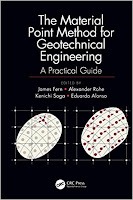Statistical Techniques for Transportation Engineering
Kumar Molugaram, G. Shanker Rao ... 538 pages - Publisher: Butterworth-Heinemann; (March, 2017) ... Language: English - AmazonSIN: B06XFRF985.
Statistical Techniques for Transportation Engineering is written with a systematic approach in mind and covers a full range of data analysis topics, from the introductory level (basic probability, measures of dispersion, random variable, discrete and continuous distributions) through more generally used techniques (common statistical distributions, hypothesis testing), to advanced analysis and statistical modeling techniques (regression, AnoVa, and time series). The book also provides worked out examples and solved problems for a wide variety of transportation engineering challenges.
Demonstrates how to effectively interpret, summarize, and report transportation data using appropriate statistical descriptors + Teaches how to identify and apply appropriate analysis methods for transportation data + Explains how to evaluate transportation proposals and schemes with statistical rigor.
Statistical Techniques for Transportation Engineering is written with a systematic approach in mind and covers a full range of data analysis topics, from the introductory level (basic probability, measures of dispersion, random variable, discrete and continuous distributions) through more generally used techniques (common statistical distributions, hypothesis testing), to advanced analysis and statistical modeling techniques (regression, AnoVa, and time series). The book also provides worked out examples and solved problems for a wide variety of transportation engineering challenges.
Demonstrates how to effectively interpret, summarize, and report transportation data using appropriate statistical descriptors + Teaches how to identify and apply appropriate analysis methods for transportation data + Explains how to evaluate transportation proposals and schemes with statistical rigor.



















